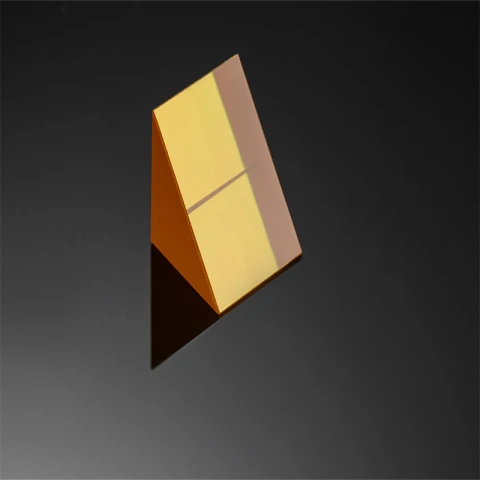Description
Znse right-angle prisms are employed for deflecting light paths or for deflecting the image formed by an optical system by 90°. Znse right-angle prisms usually have a large contact area and angles of 45° and 90°, which make them easier to install and have better stability and strength against mechanical stress.
Optical ZnSe Right Angle Prisms
Specifications
| Material: | ZnSe |
|---|---|
| Dimensions (A): | Not Specified |
| Dimensions (B): | Not Specified |
| Dimensions (C): | Not Specified |
| Surface Quality: | 60-40/40-20 |
| Angle Tolerance: | <10 mm |
Features
- High Infrared Transmission: ZnSe prisms offer excellent transparency in the mid-to-far infrared spectrum (e.g., 2-20 μm).
- Low Absorption Loss: Minimal energy loss during light propagation, ideal for high-power laser systems.
- Thermal Stability: Maintains optical performance under high-temperature environments.
- Chemical Resistance: Resistant to moisture and mild chemical corrosion.
- Precision Geometry: 90° angle accuracy ensures reliable beam steering and reflection.
Applications
- CO₂ Laser Systems: Widely used for beam delivery and focusing in industrial/medical lasers.
- Thermal Imaging: Enhances infrared imaging in military and surveillance equipment.
- Spectroscopy: Key component in infrared spectrometers for material analysis.
- Optical Testing: Utilized for alignment and calibration in optical setups.
- Medical Devices: Applied in non-invasive diagnostic tools using infrared light.
Frequently Asked Questions
What are the key optical properties of ZnSe (zinc selenide) that make it suitable for right-angle prisms in infrared applications?
ZnSe offers broad infrared transmission (0.5–22 μm), low absorption in the MWIR/LWIR spectrum, high refractive index (~2.4 at 10 μm), and minimal scatter losses. Its chemical stability and durability further enable reliable prism performance in harsh environments.
How does the 90° tolerance of a ZnSe right-angle prism impact alignment precision in optical assemblies?
A tight angular tolerance (e.g., <1 arcminute) ensures minimal deviation from the ideal 90° reflection, critical for maintaining beam path accuracy in interferometry or LIDAR systems. Deviations cause beam walk-off, affecting system resolution.
Why might a ZnSe prism with a dielectric mirror coating on its hypotenuse be preferred over an uncoated TIR design?
A dielectric coating ensures >99% reflectivity across specific angles and wavelengths, bypassing the critical angle limitations of total internal reflection (TIR). This allows flexibility in incidence angles and broadband performance.
Similar Products
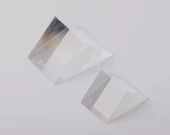
Right Angle Prism Factory Direct Sale Crystal Triangle Quartz Optical Glass Equilateral Prism
Fuzhou HCT Optics Co.,LTD
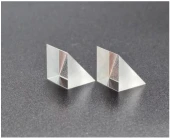
High-Precision Laser Prisms: Customizable, Durable, and Versatile
CRYSTECH Inc.
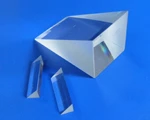
Right Angle Prisms for Telescopes and Optical Systems | Available in BK7 and UV Fused Silica
Hobbite Co Ltd
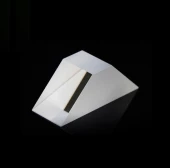
Industrial Sapphire Prisms by Sapphcom Sapphire Competence
Sapphcom Sapphire Competence
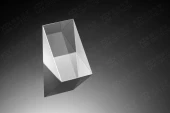
CaF2 ZnSe 45 Degree Right Angle Triangular Prism
Henan UM Optics Ltd
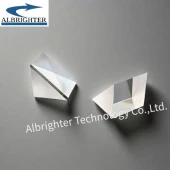
BK7 Right Angle Prisms
Albrighter Technology Co.,Ltd.

Right Angle Prism
Union Optic
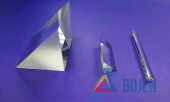
NBK7 Right Angle Prism
BoJen Optics, Inc.
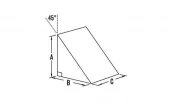
RMI Right Angle Prism - CaF2
Rocky Mountain Instrument Co.
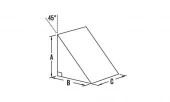
RMI Right Angle Prism - BK7 - UVFS - FS - SF2
Rocky Mountain Instrument Co.
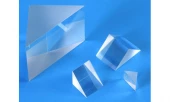
Laser Grade Prism
Tower Optical Corporation
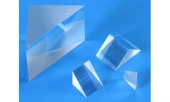
Standard Grade Prism
Tower Optical Corporation
Thank You!
Your inquiry has been received.
Create an account by adding a password
Why create an account?
- Auto-complete inquiry forms
- View and manage all your past messages
- Save products to your favorites
- Close your account anytime — no hassle
